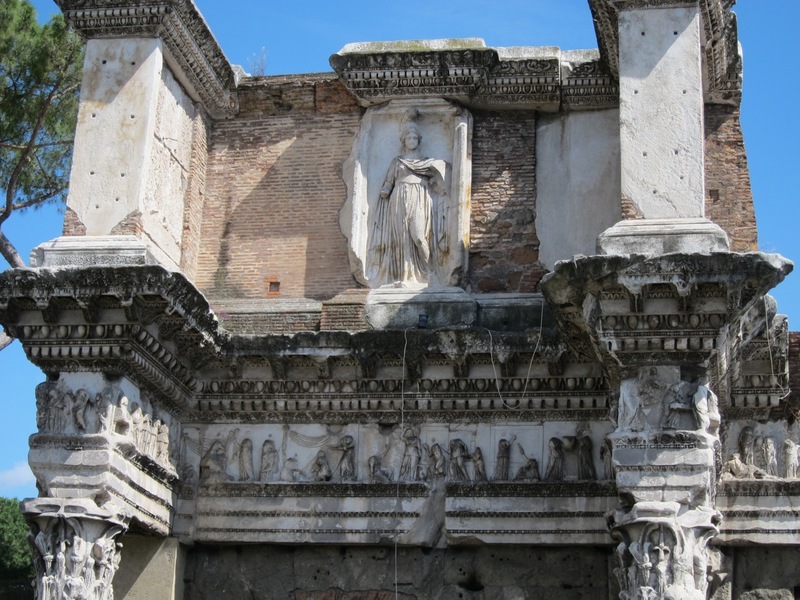Domitian, Minerva, and Morality
The worship of Minerva is prominent in the Forum of Domitian (read more). As Eve d’Ambra explains, Minerva was Domitian’s favorite deity; Domitian’s rule followed that of two other Flavians, and he needed a strong claim to a dynastic right to rule.1 The patronage of Minerva provided that claim, with her role as part of the Capitoline triad2, the origin of her cult in the Sabine region3, and her association with the palladium4.5
1. His father Vespasian (69-79 CE), and his brother Titus (79-81 CE).
2. Jupiter, Juno, and Minerva, the three gods worshipped at the Temple of Jupiter in the Capitoline Hill.
3. A region in Italy that was home to the Flavians, Domitian’s family line.
4. In Roman lore, a wooden image of Minerva that the hero Aeneas took from the burning Troy and brought with him to Italy to found Rome. It became a symbol associated with the transmission of power and the eternity of Rome.
5. d'Ambra, Eve. Private Lives, Imperial Virtues. Princeton, NJ: Princeton, 1993.
6. Arachne was a mortal woman who boasted that she could out-weave even Minerva, goddess of weaving. Minerva challenged her to a contest, in which Minerva wove the twelve Olympians in splendor and the outcome of the conflict between Minerva and Neptune for control of Athens, while Arachne depicted the gods undergoing transformation to deceive the lovers they pursued. Enraged by Arachne’s skill and her irreverent subject, Minerva turned her into a spider.
7. La Regina, Adriano, ed. Roman Forum, Palatine, Capitol and the Capitoline Museums, Imperial Forums, Coliseum, Domus Aurea. Vol. I of Archaeological Guide to Rome. Milan, Italy: Ministero per i Beni le Attivita Culturali Soprintendenza archeologica di Roma, 2004.
8. customs of the ancestors; traditions
9. Mart. Epig. 6.4.1
